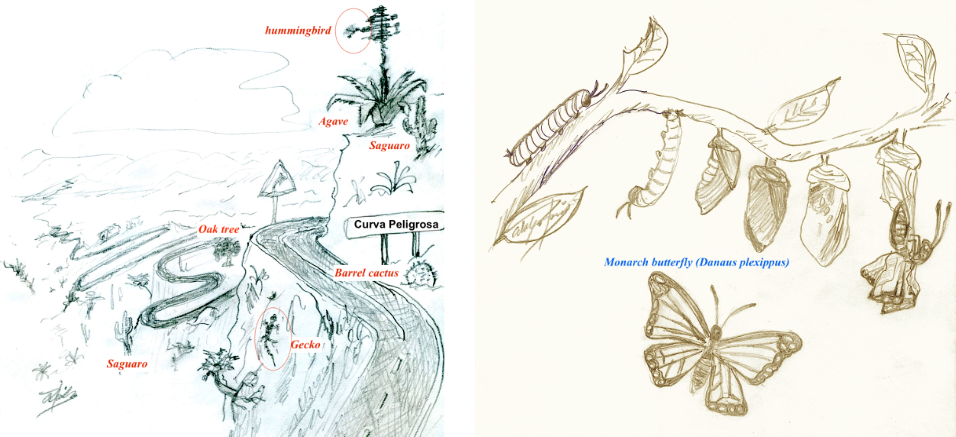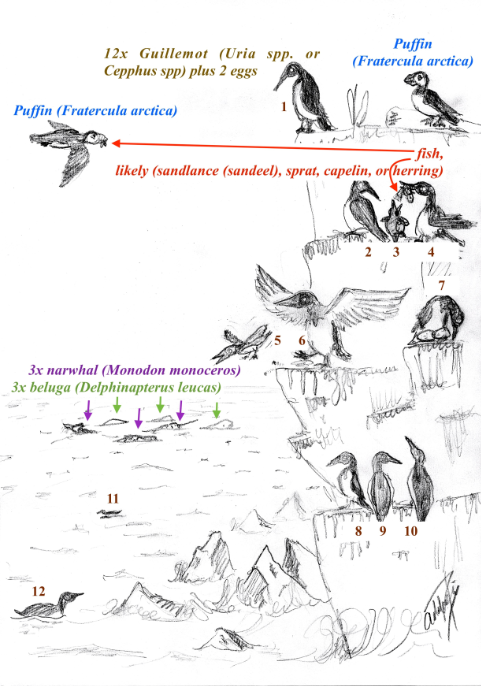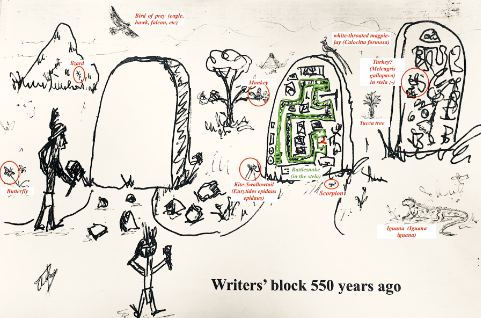Informator uniwersytecki
Quiz - Answers
I do know that this was an (almost) impossible task for those who made the effort to find all the creatures portraited in my drawings. First, because some of the animals/plants are endemic to Mexico (North&Central America), and second because some are small and hard to find. In any case, as in science, what matters is to try for the fun of it.
Here are all the animals and plants, marked and numbered. Those who got the closest to the actual number will soon will be contacted. To be honest, nobody got really close to the actual number but that was expected.

Curva peligrosa:
Hummingbird
Agave plant , Agave spp. (a few)
Saguaro cacti, Carnegiea gigantea (at least 2x)
Barrel cactus, one of the species of Echinocactus or Ferocactus.
Gecko (lizard or even the Gila monster, Heloderma suspectum, could be accepted, although the latter has a different tail shape)
Oak tree
Adolek on butterflies….
Monarch butterfly, Danaus plexippus (different developmental stages) (7x)

Guillemot, Uria or Ceppus species (12x plus 2 eggs)
Puffin, Fratercula arctica (2x)
Fish (sandlance, sprat, capelin or herring) (2x)
Narwhal, Monodon monoceros (3x follow the purple arrows) plus a few underwater J. BTW, a group of Narwhals is called blessing.
Beluga, Delphinapterus leucas (3x follow the green arrows) plus a few more underwater J. Yet, a group of Belugas is called pod, like a group of Dolphins.

Writers’ block
Bird of prey (eagle, hawk, falcon)
Butterfly
Monkey (likely spider monkey, Ateles spp.)
White-throated magpie-jay (Calocitta Formosa)
Yucca tree, Yucca spp.
Scorpion
Kite-swallowtail butterfly (Eurytides epidaus)
Iguana (Iguana iguana)
Lizard
Turkey (in the stela) (Meleagris gallopavo)
P.S.
Adolek will contact quiz participants.






